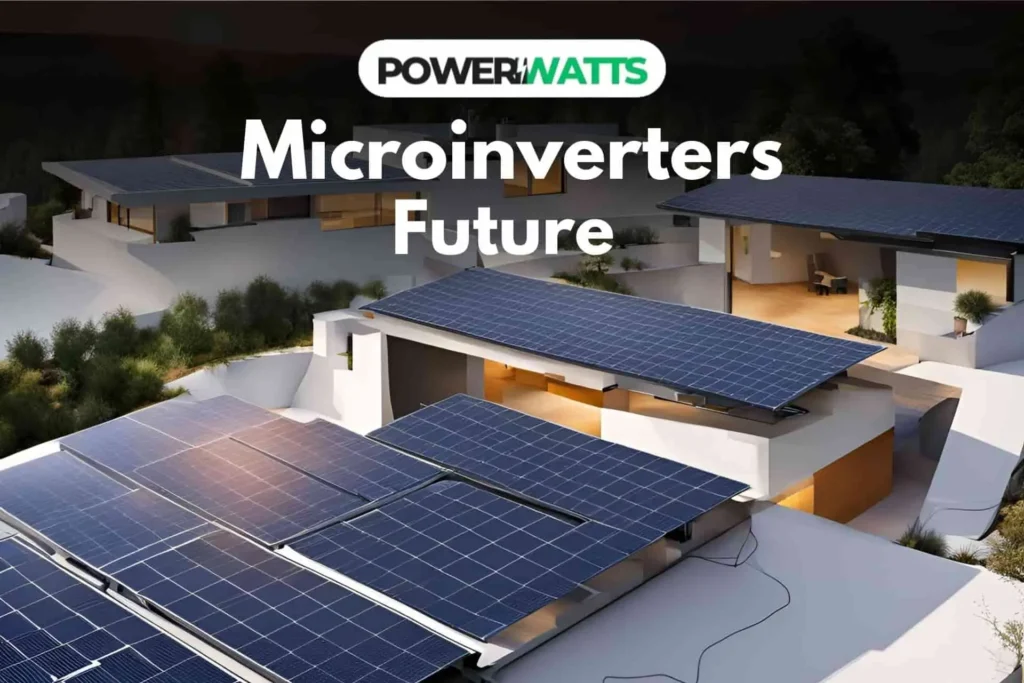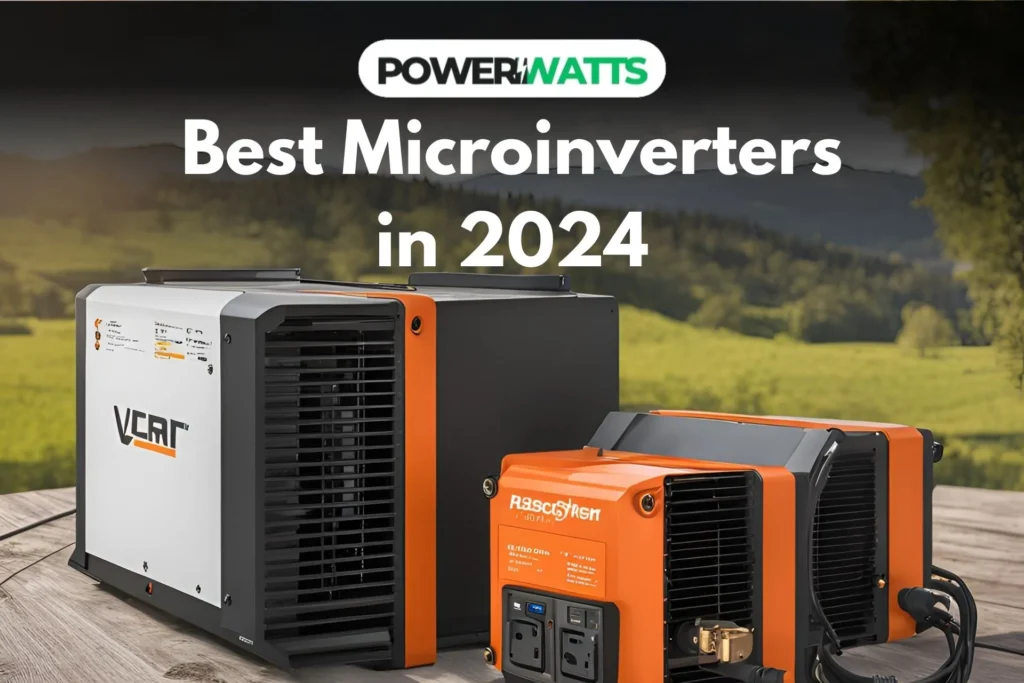Imagine a future where every solar panel on your roof operates at its best without typical system constraints. Not science fiction—microinverters exist! Small powerhouses are altering the solar game by allowing each panel to autonomously and effectively transform sunshine into clean electricity.
Are microinverters for you? What are the hidden benefits and functions? Microinverter are covered in full in this overview. Now, is the time to get the most out of your solar investment and discover how micro inverters may transform your house into a clean energy giant! By 2024, microinverters will play an even bigger role in the green energy industry.
Microinverters are a superior option for residences, companies, and solar panel suppliers due to their various advantages. Once you finish reading this, you will fully understand why microinverters are the best choice for your solar energy needs in 2024.
What are the role of microinverters?
In a photovoltaic (PV) system, microinverters are small, separate inverter units that are wired directly to each solar panel. Microinverters change the direct current (DC) from a group of solar cells into alternating current (AC). This is different from regular string inverters, which change the DC to AC at the array level.
I am sure that microinverters have many benefits such as higher safety, better economy, and easier system tracking. Microinverters can get the most power out of each solar module, even if there is trash, shade, or something else that makes the module work less well. They do this by changing the DC to AC at the panel level.
Key Advantages of Microinverters:
Better Efficiency:
With string inverters, the performance of the whole system is limited by the panel that isn’t working as well. Microinverters get rid of this “weakest link” problem. With microinverters, each panel works on its own, which makes the whole system as efficient as possible.
Better tracking:
Microinverter systems offer better tracking features that let users and workers keep an eye on how each panel is doing. This makes it easier to find and fix any problems which increases the system’s uptime and lowers the cost of upkeep.
Safety has grown:
Microinverters work with much lower voltages (usually 48V to 60V) than string inverters, which use high-voltage DC systems with 600V or more.
Longer guarantees:
Microinverters are made to work in harsh weather conditions, and their guarantees are usually quite long, lasting 25 years or more. According to my opinion, this gives people and companies more peace of mind and a better return on their solar investment over time.
Scalability and Flexibility:
Microinverter systems are very flexible and can be easily expanded as energy needs change. The flexible form of microinverters also makes it easier to change individual parts, which lowers the effect of a single point of failure.
Microinverters Vs String Inverters
Traditionally, string inverters were the most popular choice for installing solar panels. But, there are many advantages of micro inverters such as
Performance and Cost Effectiveness
- Micro inverters: As we already said, microinverters are very efficient because each panel works on its own. In other words, if one panel is in the shade or not working well, the system as a whole can still make power at its best.
- String inverters: The “weakest link” problem can happen with string inverters. This means that the panel that isn’t working as well can slow down the whole system. This can cause big power loss, especially in systems where some panels are shaded or don’t work as well as others.
Diagnostics and monitoring
- Microinverters: Microinverter systems have advanced tracking features that let users and workers keep an eye on how each panel is doing. This fine level of data makes it easier to fix any problems which increases system uptime and lowers the cost of maintenance.
- String Inverters: Installing string inverters usually only monitors the whole system, which makes it hard to find the source of any performance problems. It can take longer and cost more to diagnose and fix problems.
Flexibility
- Microinverters: Systems that use microinverters are very flexible and can be easily expanded as energy needs change. The flexible design also makes it easier to repair separate parts which lowers the risk of a single point of failure.
- String Inverters: Adding to or changing a string inverter system can be harder because the whole group might need to be rearranged to make room for the changes.
Garanties
- Microinverters: Microinverters usually come with longer warranties, often 25 years or more. I am sure this gives businesses and homeowners more long-term peace of mind and a better return on their solar investment.
- String Inverters: The warranties on string inverters are usually shorter, lasting only 5 to 10 years. This may not match up with how long you expect your solar installation to last.

Microinverter Future 2024 and Beyond
By 2024 and beyond, microinverters’ prospects will be brighter. Manufacturers are always adding new features and developments to make microinverters the best solar energy system option.
Enhanced Efficiency and Performance
Power conversion efficiency, power density, and system performance are predicted to increase rapidly as microinverter technology evolves. This will boost energy output and save homes and businesses money.
Growing Product Lines
Microinverter leaders are expanding their product lines for more solar applications. We design hybrid inverters, AC-coupled inverters for energy storage systems, and rapid shutdown devices (RSDs) to make rooftop solar installations safer.
Rise in Adoption and Market Share
As microinverters’ advantages become well known, their adoption should rise. Microinverters will continue to dominate the worldwide solar inverter market and it will be the best option for residential and commercial.
How to Evaluate Microinverter: Step-by-Step
Starting to examine solar energy system microinverters but confused about where to start. It might be difficult to evaluate microinverters but our step-by-step guide will help you choose one that will power your house or company for years.
First, examine microinverters from string inverters. Panel-level microinverters convert DC to AC energy for each solar module. If one panel is shaded or debris-effected, the remainder of the system can generate electricity at ideal levels. In contrast, string inverters suffer from the “weakest link” issue, where the least efficient panel limits system performance.
Next, evaluate the lasting quality of microinverters. The warranties of 25 years or more of microinverters provide you peace of mind and a superior solar investment return.
Look for microinverter models with excellent efficiency but broad temperature tolerance, and speedy shutdown. Top manufacturers like Enphase make microinverters with integrated ASIC processors and panel-level remote monitoring.
These variables plus a qualified solar installer can help you pick the proper microinverters for your solar energy system. Prepare to confidently and efficiently harvest solar electricity!
Are the Maintenance of Microinverters Expensive?
Microinverter solar system maintenance needs, based on search results such as
- Low Maintenance: Microinverter systems are low maintenance. They provide “trouble-free energy production” with little maintenance.
- Regular checks and inspections: Microinverters and solar panels should be monitored often to guarantee optimal operation. The monitoring software and mobile applications allow this.
- Visually inspecting solar panels and microinverters annually, particularly after storms or strong winds, for debris, soiling, or damage is recommended.
- Cleaning Solar Panels: Maintaining clean solar panels boosts energy generation. Some locales clean panels naturally with rain and snow, while others need occasional human cleaning.
- Consulting Solar Experts: Develop a maintenance plan for your solar installation and have them execute any essential system inspections or services yearly.
Microinverter systems are low-maintenance but need to be monitored, visually inspected, and cleaned to maintain efficiency. Maintenance is low compared to standard string inverter systems.
Conclusion
I believe microinverters are revolutionizing the ever changing solar energy landscape. Microinverters will become more important in the solar sector in 2024 and beyond because of their high efficiency, sophisticated monitoring, and improved safety.
Homeowners, business owners, and solar installers must comprehend microinverter advantages to make energy future choices. Consider microinverters as you start your solar adventure. In 2024 and beyond, their advanced technology and fantastic performance make them the sensible option for renewable energy. Now, take the first step and get a Quote according to your system.


